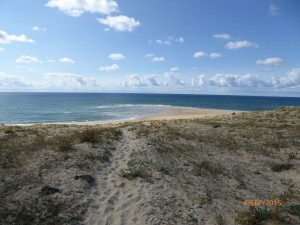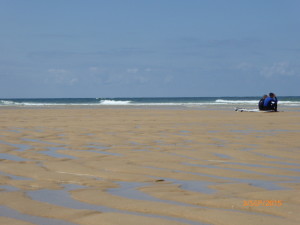How this podcast is produced – MES010
 How this podcast is produced
How this podcast is produced
This is the vacation episode. Recorded on my way to the beach of Moliets-et-Maa.
Moliets-et-Maa is a small village in south-west of France. It’s situated close to the Atlantic sea. Roundabout 120 km south of Bordeaux and 50 kilometres north of Biarritz. It’s a surfer’s spot and offers a 9- and 18-hole golf course. We love it due to the great sea view, the wide beach and the lovely weather conditions.
It’s also my 10th episode and therefore time for a short celebration. Hoorray. Okay, that’s enough.
5 steps to produce a podcast episode
I wanted to give you a short insight how the episodes of this podcast are meanwhile produced. You will learn about planning an episode. The way it is recorded. And the details about post-processing and releasing. Finally I will add some details about promotion.
Enjoy!
The tools I use
- MindMeister is my mind-mapping tool for planning the episode’s content. I also use it during recording as my cheat-sheet
- audacity is a free, open source, cross-platform software for recording and editing sounds. I heavily use it to remaster my recorded sound files. There’s also Adobe Audition, but you will have to pay for it.
- auphonic is the automatic audio post production web service for podcasts, broadcasters, radio shows, movies, screencasts and more. I use auphonic for my final normalization and loudness amplifying to achieve a constant level of volume in my episodes.
- Rode is the manufacturer of great microphones. I regularly use the NT1-A, but in this episode the SmartLav+ is in use.
- dig.ccmixter.org is my preferred source for royalty-free music following the Creative Commons Licence
- buffer.com is my preferred tools for scheduled contributions to Twitter and LinkedIn. However buffer is much more. Get yourself a try.


 I am a wholehearted SW-engineer on my journey to create a business supporting newcomers, seniors, managers and leaders.
I am a wholehearted SW-engineer on my journey to create a business supporting newcomers, seniors, managers and leaders.
Leave a Reply
Want to join the discussion?Feel free to contribute!